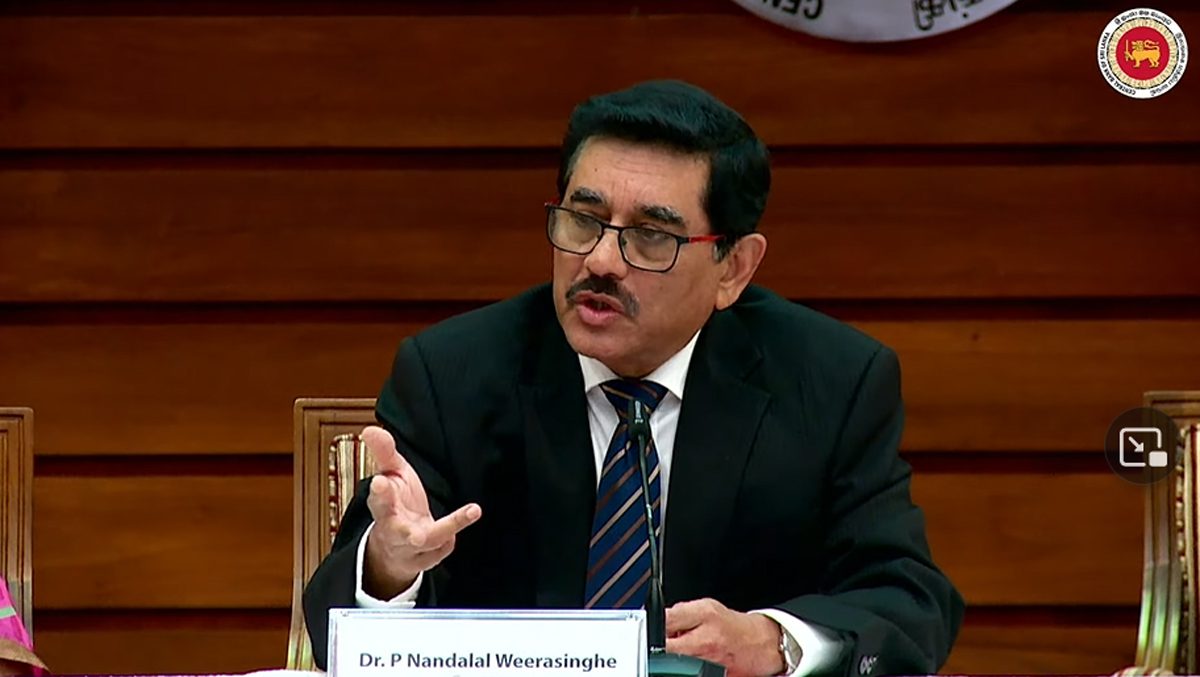General
Sri Lanka exporters bring back nearly 100-pct of proceeds: CB Governor


ECONOMYNEXT – Sri Lanka’s renewable companies say they need tariff of 40 to 45 rupees a unit to sell power to the Ceylon Electricity Board and the agency owes them tens of billions of rupees for power sold in the past.
The association has strong exchange rate expectations based on the country’s dual anchor conflicting monetary regimes involving flexible inflation targeting with a reserve collecting target.
“In the coming year of course because of the rupee devaluation, I think the solar energy sector might require tariffs closer to RS 40 or RS 45, hydropower will also require tariffs on that scale,” Prabath Wickremasinghe President of the Small hydropower Developers Association told reporters.
“I think right now what they pay us is averaging around RS 15 to RS 20.”
Some of the earlier plants are paid only 9 rupees a unit, he said. The association there is potential to develop around 200 Mega Watts of mini hydros, 700 to 1000MW of ground mounted soar and about 1,000 rooftop solar.
In addition to the rupee collapse, global renewable energy costs are also up, in the wake of higher oil prices in the recent past and energy disruption in Europe.
The US Fed and the ECB have tightened monetary policy and global energy and food commodity price are now easing.
However in a few years the 40 to 45 rupee tariffs will look cheap, Wickremesinghe pointed out, given the country’s monetary policy involving steep depreciation.
From 2012 to 2015 the rupee collapsed from 113 to 131 to the US dollar. From 2015 to 2019 the rupee collapsed from 131 to 182 under flexible inflation targeting cum exchange rate as the first line of defence where the currency is deprecated instead of hiking rates and halting liquidity injections.
From 2020 to 2022 the rupee collapsed from 182 to 360 under output gap targeting (over stimulus) and exchange rate as the first line of defence.
“The tariffs are paid in rupees,” Wickremasinghe said. With the rupee continuing to devalue in other 5 years 40 rupees will look like 20 rupees.”
Sri Lanka has the worst central bank in South Asia after Pakistan. Both central banks started with the rupee at 4.70 to the US dollars, derived from the Reserve Bank of India, which was set up as a private bank like the Bank of England.
India started to run into forex shortages after the RBI was nationalized and interventionist economic bureaucrats started to run the agency. Sri Lanka’s and Pakistan’s central bank were run on discretionary principles by economic bureaucrats from the beginning.
The Central Bank of Sri Lanka was set up with a peg with gold acting as the final restraint on economic bureaucrats, but it started to depreciated steeply from 1980 as the restraint was taken away.
Now under so-called ‘exchange rate as the first line of defence’ whenever the currency comes under pressure due to inflationary policy (liquidity injections to target an artificially low policy rate or Treasuries yields) the currency is depreciated instead of allowing rates to normalize.
Eventually rates also shoot up, as attempts are made to stabilize the currency which collapses from ‘first line of defence’ triggering downgrades along the way.
After the currency collapse, the Ceylon Electricity Board, finances are shattered and it is unable to pay renewable operators.
Unlike the petroleum, which has to stop delivery as it runs out of power, renewable operators continue to deliver as their domestic value added is higher.
However they also have expenses including salaries of staff to pay.
The CEB which is also running higher losses after the central bank printed money and triggered a currency collapse, has not settled renewable producers.
“In the meantime, we have financial issues with the investors and CEB owns more than 45 million rupees in the industry,” Warna Dahanayaka, Secretary of Mini Hydro Association, said at the conference.
“We can’t sustain because we can’t pay the salaries and we can’t sustain also because of the bank loans. Therefore, we are requesting the government to take the appropriate action for this matter.”
Sri Lanka and Pakistan have identical issues in the power sector including large losses, circular debt, subsidies due to depreciating currencies.
In Sri Lanka there is strong support from the economists outside government for inflationary policy and monetary instability.
The country’s exporters, expatriate workers, users of unofficial gross settlement systems, budget deficits and interbank forex dealers in previous crises have been blamed for monetary instability rather than the unworkable impossible trinity regime involving conflicting domestic (inflation target) and external targets (foreign reserves).
The country has no doctrinal foundation in sound money and there is both fear of floating and hard peg phobia among opinion leaders on both sides of the spectrum regardless of whether they are state or private sector like any Latin American country, critics say.
Related
South Asia, Sri Lanka currency crises; only 2-pct know monetary cause: World Bank survey
A World Bank survey last year found that only 2 percent of ‘experts’ surveyed by the agency knew that external monetary instability was generated by the central bank. Most blamed trade in severe knee jerk reaction. (Colombo/Jan29/2023)








